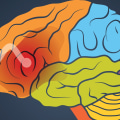Many people who suffer from addiction have inherited a brain that has difficulty saying no to drugs. A study published in Science reveals that cocaine addicts have abnormalities in areas of the brain involved in self-control, and these abnormalities seem to predate any drug abuse. Imaging technology can be used to measure brain and heart function, with the highest activity shown in the reds and yellows, and the reduced activity in the blue and purple. Both the healthy brain and the healthy heart show greater activity than the diseased brain and heart, as addiction and heart disease cause changes in function.
In drug addiction, the frontal cortex, in particular, shows less activity. This is the part of the brain associated with judgment and decision-making. Neurochemical studies have shown that large and rapid increases in dopamine are associated with the reinforcing effects of drugs of abuse, but also that after chronic drug abuse and during withdrawal, brain dopamine function decreases markedly. Functional imaging studies have revealed that during drug poisoning or desire, certain frontal regions are activated as part of a complex pattern that includes brain circuits involved with reward, motivation, memory, and control.
Integrating these findings, a model has been proposed to explain the loss of control and compulsive drug intake that characterize addiction. This model suggests that in drug addiction, the value of drugs and drug-related stimuli is increased at the expense of other reinforcers due to conditioned learning and re-establishment of reward thresholds as an adaptation to high levels of stimulation induced by drugs of abuse. When someone develops an addiction, the brain craves the reward of the substance due to intense stimulation of its reward system. This can lead to a series of euphoric feelings and strange behavioral traits, as well as long-term consequences such as brain damage or even death.
Relatively new imaging technologies such as positron emission tomography (PET) and functional magnetic resonance imaging (fMRI) have provided new ways to investigate how biological factors integrate with each other, how they relate to behavior, and how biological and environmental variables interact in drug addiction. The relevance of learning and memory for addiction is evident by the pernicious effect that a place, a person or a sign that brings back memories of the drug may have on an addict trying to stay clean. Mindfulness meditation and magnetic brain stimulation are being evaluated for their ability to strengthen brain circuits damaged by addiction. When Alcoholics Anonymous was gaining acceptance in the 1980s, scientists found that funding agencies were unwilling to support research into abstinent model treatments.
Not everyone with genetic vulnerability will become addicted, but when vulnerability is present they are much more likely to fall into repeated drug use. Adolescents are especially vulnerable to possible addiction because their brains are not yet fully developed, especially the frontal regions that help control impulses and assess risk. Attempts to understand and treat addiction as a purely biological or environmental problem have not been very successful. However, imaging studies on specific protein abnormalities in the brain of subjects addicted to drugs can help improve brain activity, reducing the effects of addiction and unhealthy impulses.


